

|
|
Mephisto Waltz (The) AKA Satan Mon Amour (Blu-ray)
[Blu-ray]
Blu-ray B - United Kingdom - Signal One Entertainment Review written by and copyright: Paul Lewis (8th April 2017). |
|
The Film
  The Mephisto Waltz (Paul Wendkos, 1971) The Mephisto Waltz (Paul Wendkos, 1971)
Music journalist Myles Clarkson (Alan Alda) leaves his wife Paula (Jacqueline Bisset) and daughter Abby (Pamela Ferdyn) to interview pianist Duncan Ely (Curd Jürgens) at his home. Ely reacts coldly to Myles, until Myles reveals that as a younger man, he displayed a talent for playing the piano which fell by the wayside, leading to Myles taking up a career as a writer. Duncan asks Myles to play the piano, and then comments on Myles’ ‘Rachmaninov hands’ (‘Hands like yours are one in a hundred thousand’) before introducing the journalist to his divorced daughter Roxanne (Barbara Parkins). At a party thrown by the Elys, Myles introduces Paula to Duncan, who asks Myles to play a duet on the piano with him. Paula watches on as Roxanne gazes at Myles, and the Elys’ dog Robin growls menacingly at Paula. Paula has opened a boutique, which is performing badly until Duncan and his entourage pay a visit and buy numerous goods. After Duncan and his friends have left, Paula’s colleague tells Paula that Duncan’s ‘wife was murdered – by a dog’. Paula returns home and tells Myles she is worried about Duncan and feels that Duncan and Roxanne are ‘studying us like little white mice in a maze’. However, despite her reticence, Myles manages to persuade Paula to attend the Elys’ New Year’s Eve party with him; they discover the party is a bizarre masked ball, the strange formality of the occasion offset by the funk music which dominates the soundscape. In the Ely house, Paula discovers life casts, looking suspiciously like death masks, that Roxanne has made, and Roxanne expresses her desire to produce a similar cast of Myles’ face. Visiting the Ely home so that Roxanne may make her life cast of him, Myles discovers that Duncan is dying of leukemia. He returns home and tells Paula this, suggesting to her that he is the son that Duncan never had. (In response, Paula reminds Myles that he already has a father.) 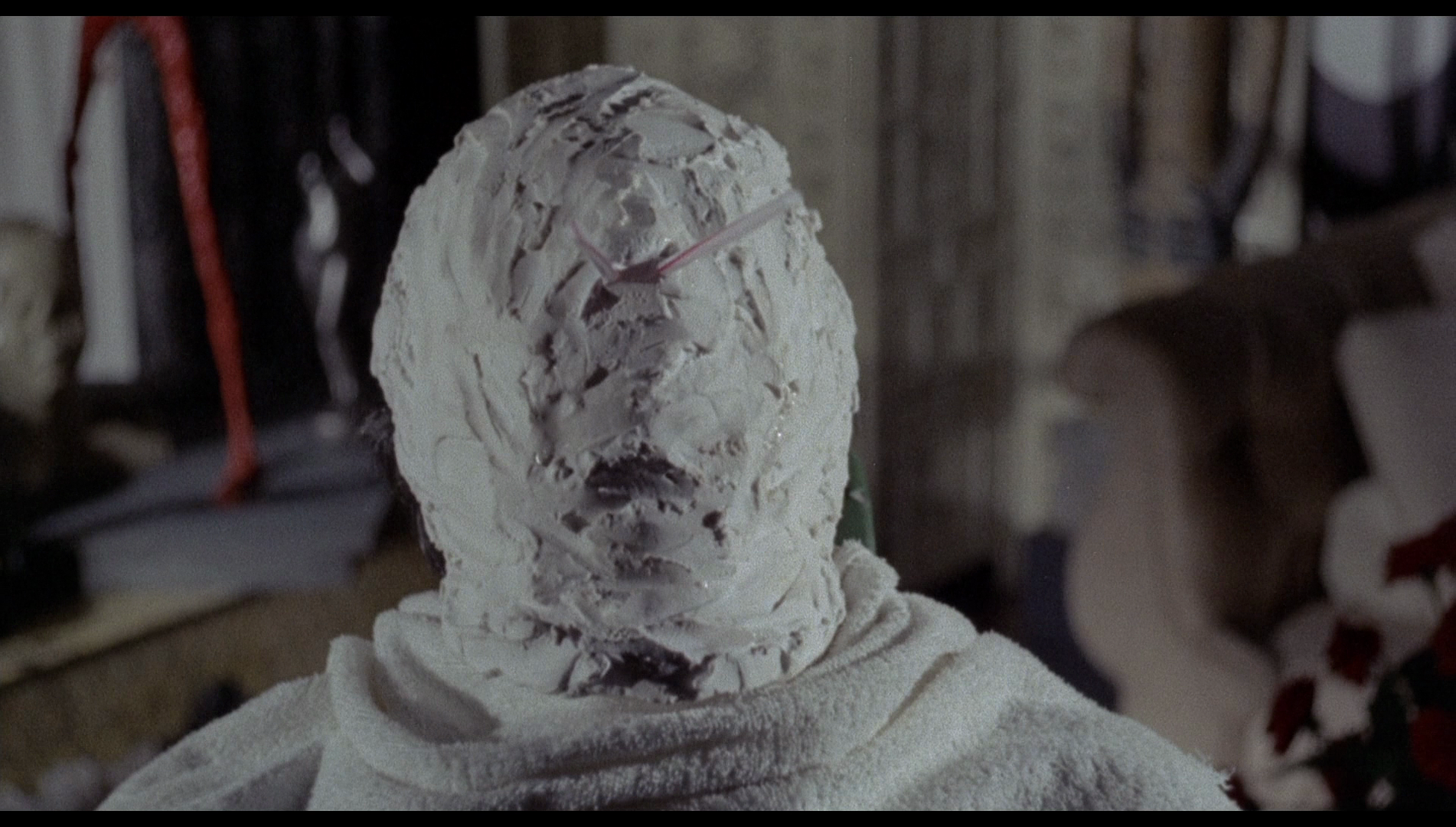 Duncan returns to the Ely home to donate blood to Duncan. Whilst there, Myles falls asleep and experiences a strange dream in which Roxanne places one of her life casts on his head and, using a strange oil, draws a pentagram on the floor of the room, whilst Duncan chants in a low, desperate whisper. When Myles awakens the next morning, Paula discovers that some aspects of his character have changed; Duncan dies soon afterwards, and following Duncan’s funeral Paula begins to suspect that Duncan has somehow transplanted himself into the body of her husband. This is compounded when Duncan’s will reveals that Duncan has left his collection of musical scores and $100,000 to Myles, and Myles uses this ‘gift’ to pursue a career as a pianist. Paula begins to suspect that Duncan has somehow ‘possessed’ Myles and is also involved in a bizarre incestuous relationship with his own daughter Roxanne. Duncan returns to the Ely home to donate blood to Duncan. Whilst there, Myles falls asleep and experiences a strange dream in which Roxanne places one of her life casts on his head and, using a strange oil, draws a pentagram on the floor of the room, whilst Duncan chants in a low, desperate whisper. When Myles awakens the next morning, Paula discovers that some aspects of his character have changed; Duncan dies soon afterwards, and following Duncan’s funeral Paula begins to suspect that Duncan has somehow transplanted himself into the body of her husband. This is compounded when Duncan’s will reveals that Duncan has left his collection of musical scores and $100,000 to Myles, and Myles uses this ‘gift’ to pursue a career as a pianist. Paula begins to suspect that Duncan has somehow ‘possessed’ Myles and is also involved in a bizarre incestuous relationship with his own daughter Roxanne.
With echoes of Goethe’s Faust and tapping into the same zeitgeist of corrupt families and fears over black-magic-practised-by-your-friends-and-neighbours as Ira Levin’s novel Rosemary’s Baby (1967, and the film adaptation by Roman Polanski) and later 1970s pictures such as Race with the Devil (Jack Starrett, 1975), Paul Wendkos’ 1971 film The Mephisto Waltz was one of a wave of movies about the Devil and devil worship that threatened to seem positively quaint with the release of William Friedkin’s The Exorcist in 1973. At the time of its initial publication in 1969, Fred Mustard Stewart’s source novel was cited as derivative of Ira Levin’s Rosemary’s Baby, but in its examination of the practicing of black magic within ‘respectable’ circles of society, the novel has many other predecessors – including, for example, Jacques Tourneur’s Night of the Demon (1957), with Niall MacGinnis’ urbane Aleister Crowley-alike Dr Karswell setting the template for The Mephisto Waltz’s Duncan Ely. The idea that one’s outwardly respectable friends and neighbours might, behind closed doors and curtains, be practicing the dark arts was popular in 1970s fiction, feeding into the ‘satanic panic’ of the 1980s. Stewart’s novel was also indebted to some of the myths surrounding various figures within the world of music who have reputedly sold their souls in exchange for prodigious musical talents: for example, Paganini’s supposed pact with the devil, selling his soul in exchange for an ability to play the violin like no other person before or since, or blues legend Robert Johnson’s Faustian pact at the crossroads near the Dockery Plantation in Mississippi. 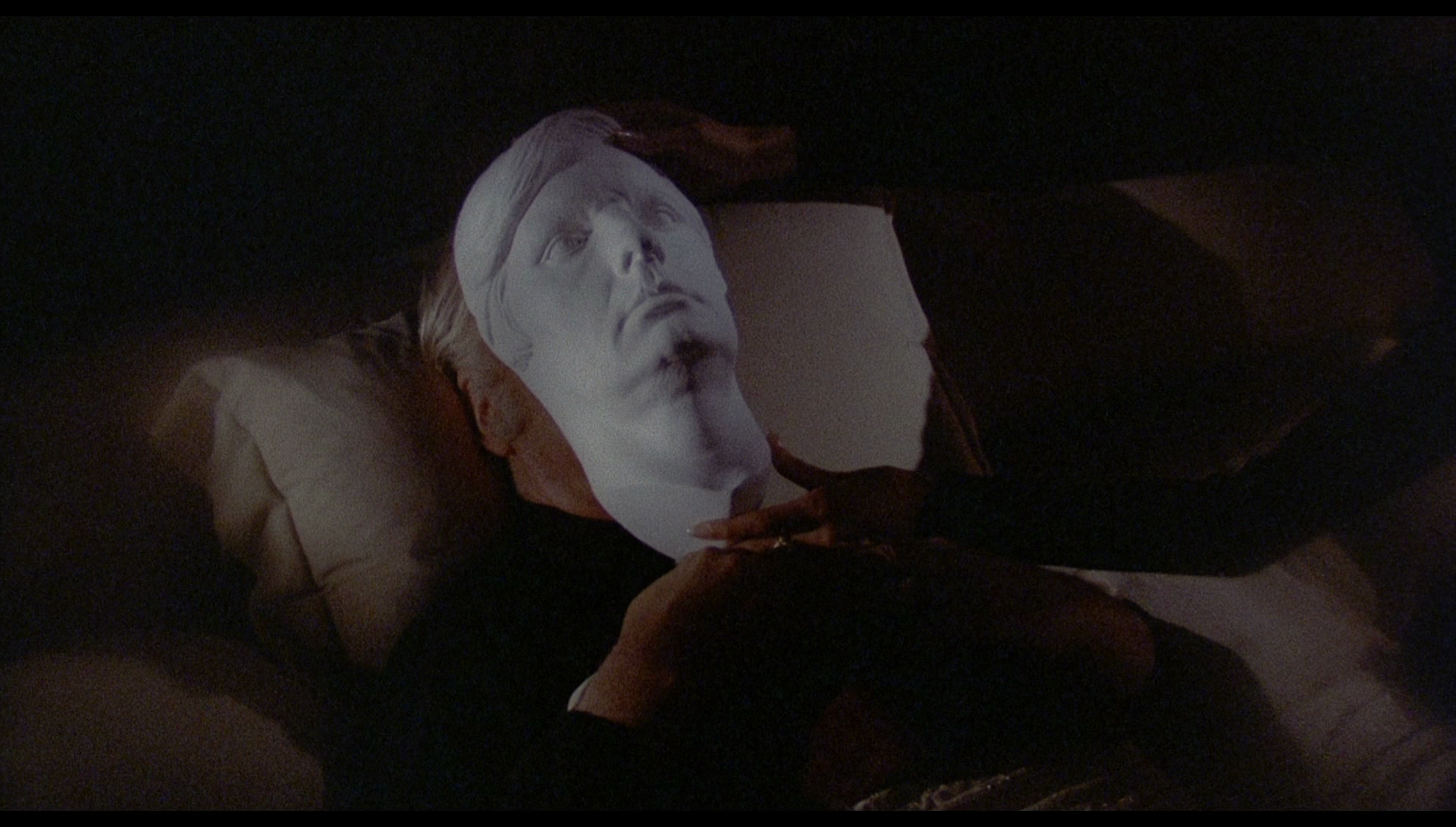 Though made a year prior, The Mephisto Waltz’s depiction of the bizarre party thrown by Duncan and his daughter Roxanne and populated by Satanists wearing occult masks (rather like in Roger Corman’s 1964 film adaptation of The Masque of the Red Death) has strange pre-echoes of the Rothschilds’ infamous Surrealist art-influenced party held at the Chateau de Ferrieres in December of 1972. One of the most frequently reproduced stills from the production of The Mephisto Waltz, a photograph that has appeared in numerous books about horror films, is the monochrome image of Barbara Parkins holding the reins of the Elys’ dog Robin, which is wearing the mask of a man. It’s a strange, striking image that speaks of the nightmarish qualities of the film’s fantasy sequences, but it arguably misrepresents the picture – which is, for most of its running time, fairly naturalistic and low-key, the growing sense of horror unfolding within the blazing California sunlight, and the image of Parkins holding the mask-wearing dog is but a fleeting shot within the film’s party scene. Though made a year prior, The Mephisto Waltz’s depiction of the bizarre party thrown by Duncan and his daughter Roxanne and populated by Satanists wearing occult masks (rather like in Roger Corman’s 1964 film adaptation of The Masque of the Red Death) has strange pre-echoes of the Rothschilds’ infamous Surrealist art-influenced party held at the Chateau de Ferrieres in December of 1972. One of the most frequently reproduced stills from the production of The Mephisto Waltz, a photograph that has appeared in numerous books about horror films, is the monochrome image of Barbara Parkins holding the reins of the Elys’ dog Robin, which is wearing the mask of a man. It’s a strange, striking image that speaks of the nightmarish qualities of the film’s fantasy sequences, but it arguably misrepresents the picture – which is, for most of its running time, fairly naturalistic and low-key, the growing sense of horror unfolding within the blazing California sunlight, and the image of Parkins holding the mask-wearing dog is but a fleeting shot within the film’s party scene.
Apparently, director Wendkos intended for The Mephisto Waltz to be a relatively subtle, low-key horror picture, commenting that the film ‘required a fairly sophisticated, educated audience. It wasn’t easy material for the general mass audience to absorb. It wasn’t the ordinary horror picture of today where somebody’s head is decapitated. It was a very very difficult and sophisticated idea, a piece of material that required the audience to think, and to know about soul transference and soul transmogrification’ (Wendkos, quoted in Etter, 2003: 101). The Mephisto Waltz was producer Quinn Martin’s only attempt at producing a theatrical feature, and Wendkos had been hired by Quinn Martin to direct the film following the success of Wendkos’ 1969 television film Fear No Evil (also made by Wendkos for Quinn Martin). However, the project struggled with the ambitious qualities of Fred Mustard Stewart’s source novel and Wendkos’ intentions for the film adaptation. The film’s shooting script was ‘too long’ and Wendkos shot enough material for a four hour-long feature, necessitating some very judicious editing before the final cut was assembled (ibid.: 102). As Wendkos has also suggested, because the narrative dealt with nebulous themes, including a transference of the soul, he struggled with how to represent this visually and relied on ‘us[ing] stylistic devices to [help the audience] enter into the realm of understanding the paranormal’ (Wendkos, quoted in ibid.). Wendkos also found himself battling against last-minute cuts to the budget, and the casting of ‘[c]ertain actors [who] were friends of Darryl Zanuck’s; so we were sort of forced to use actors I didn’t particularly like’ (Wendkos, quoted in ibid.: 103). (Wendkos is quick to establish that this was neither Alda nor Bissett.) 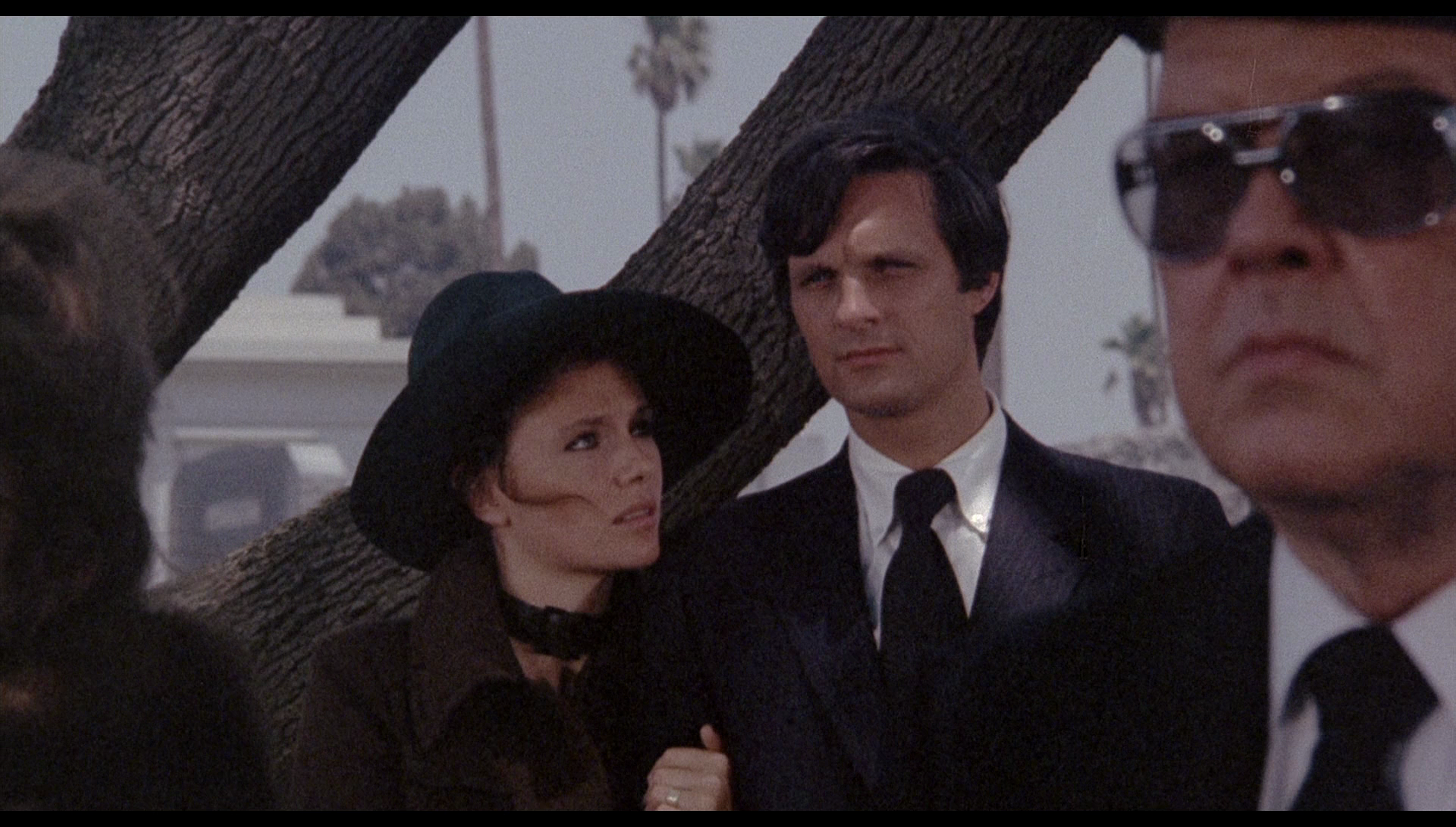 John Kenneth Muir has argued that The Mephisto Waltz is incoherent in its structure. The film begins, Muir says, with a situation that is not uncommon in Hollywood: the ‘old power, fortified by a powerful reputation, absconds with the talents of a younger generation, which is trying to establish itself and is eager to please’ (Muir, 2002: 130). The older generation ‘resort to theft’ of the younger generation’s talents, whilst the younger generation ‘are so desperate to do important work’ that ‘they settle for apprenticeships that don’t always favour their best long-term interests’ (ibid.). Likewise, David Huckvale has referred to Wendkos’ The Mephisto Waltz as ‘an engaging and ultimately quite accurate allegory of how unpleasant highly successful people in the art world […] can be’, with ‘[t]he various party scenes demonstrat[ing] all too realistically the kind of back-biting and sniping indulged in by the cognoscenti’ (Huckvale, 2013: 61). In the scene that introduces Duncan and Roxanne, when Myles visits Duncan’s home to interview him, Duncan is shown heaping scorn upon critics: ‘Even when they’re right, they are stupid’, he asserts angrily, ‘They don’t understand that after a concert there’s blood on the piano keys. And there should be’. Muir argues that at its midway point the picture shifts focus, becoming ‘one woman’s quest for good sex at the expense of her daughter’s life and her husband’, with a final sequence which is both ‘exploitative’ and ‘out of character’ for Paula (Muir, op cit.: 130). John Kenneth Muir has argued that The Mephisto Waltz is incoherent in its structure. The film begins, Muir says, with a situation that is not uncommon in Hollywood: the ‘old power, fortified by a powerful reputation, absconds with the talents of a younger generation, which is trying to establish itself and is eager to please’ (Muir, 2002: 130). The older generation ‘resort to theft’ of the younger generation’s talents, whilst the younger generation ‘are so desperate to do important work’ that ‘they settle for apprenticeships that don’t always favour their best long-term interests’ (ibid.). Likewise, David Huckvale has referred to Wendkos’ The Mephisto Waltz as ‘an engaging and ultimately quite accurate allegory of how unpleasant highly successful people in the art world […] can be’, with ‘[t]he various party scenes demonstrat[ing] all too realistically the kind of back-biting and sniping indulged in by the cognoscenti’ (Huckvale, 2013: 61). In the scene that introduces Duncan and Roxanne, when Myles visits Duncan’s home to interview him, Duncan is shown heaping scorn upon critics: ‘Even when they’re right, they are stupid’, he asserts angrily, ‘They don’t understand that after a concert there’s blood on the piano keys. And there should be’. Muir argues that at its midway point the picture shifts focus, becoming ‘one woman’s quest for good sex at the expense of her daughter’s life and her husband’, with a final sequence which is both ‘exploitative’ and ‘out of character’ for Paula (Muir, op cit.: 130).
In this light, The Mephisto Waltz may be considered one of those films of the 1950s, 1960s, 1970s and 1980s that examined the strange terror that one’s husband or wife is not who you thought them to be, a moment of dissonance recognisable to any married person: the bed you share with your spouse becomes mired in confusion and the realisation that your husband or wife is always more than you believed them to be. The theme of the performativity of identity is foregrounded in the film by the use of masks, from the masked ball which takes place in the Elys’ home on New Year’s Eve to the life casts – looking suspiciously like death masks – that Roxanne makes (presumably of her and Duncan’s previous victims) as a precursor to the ritual in which Duncan transfers his soul to the body of Myles. When Paula first stumbles into a room in which these masks are displayed, whilst exploring the Ely house, she is challenged by Roxanne, who asks Paula if she likes her artworks. ‘I come from a worried generation’, Paula responds, ‘I like nice, safe abstract forms. Yours are a little too real for comfort’. ‘That’s true, and very perceptive’, Roxanne says before asserting that she would like to make a life cast of Myles’ face. 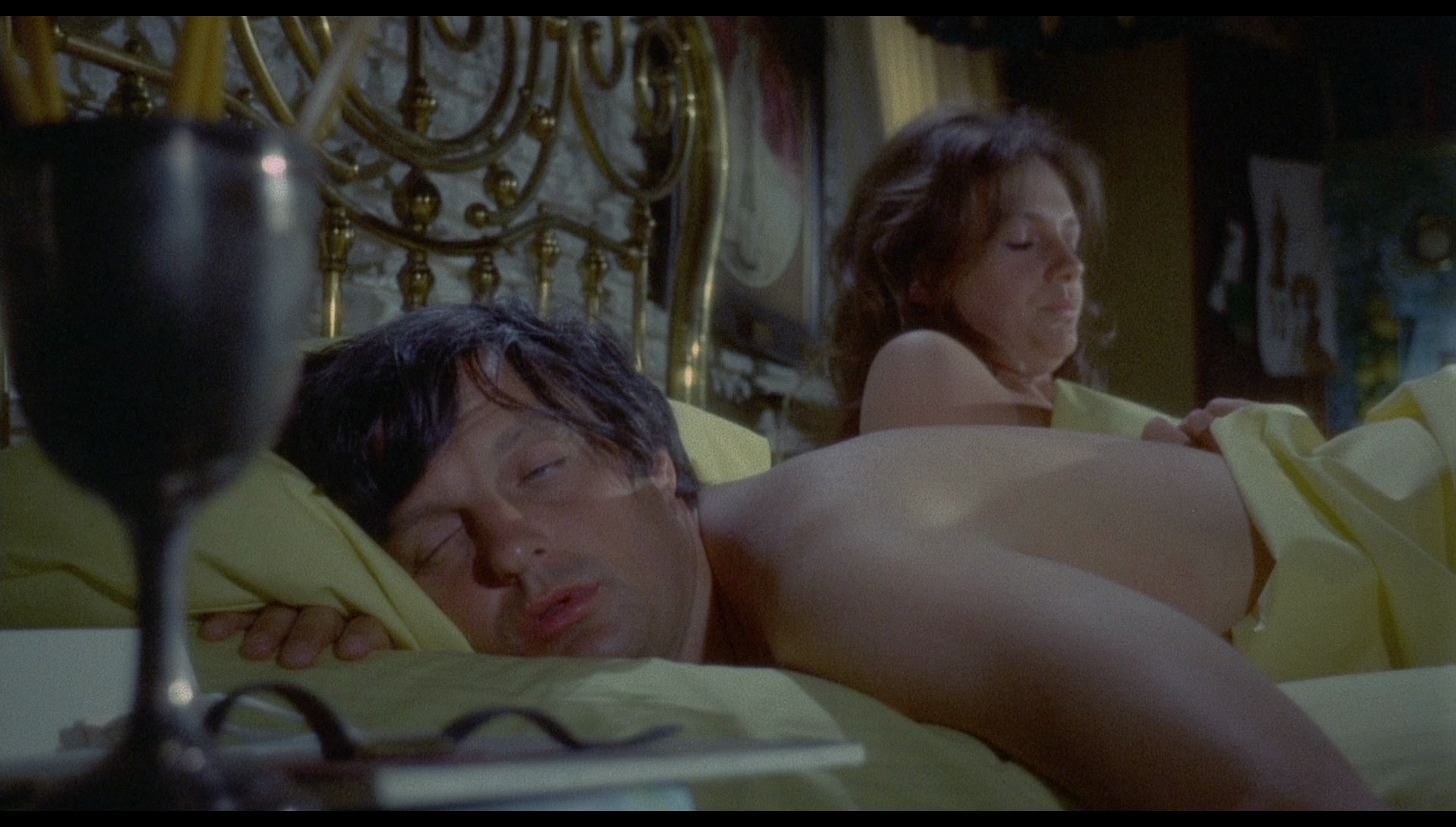 From his first meeting with Duncan, Myles becomes quickly entranced by the pianist and his lifestyle, the splendour of Duncan’s home contrasted with the far more modest home of the Clarksons. Where Paula is wary of the Elys, telling Myles that she her suspicions have been aroused by Duncan’s patronage of her boutique (‘Why? What’s the reason?’, she asks) and feeling that Duncan is ‘studying us like white mice in a maze’, Myles is fascinated by Duncan and his daughter. Myles wishes to go to Duncan’s New Year’s Eve party, but Paula does not – stating that she prefers to spend New Year’s Eve as she and Myles have always spent it, alone at home. ‘Look, baby’, Myles protests, ‘I really wanna go to that party. It’s important to me’. After his ‘possession’ by Duncan Ely, Myles transforms from a loving but rather docile husband and father to a man of passion. However, he doesn’t recognised the ‘closed code’ that Myles and Paula speak: upon awakening after the ritual performed by Roxanne, Myles-Duncan doesn’t respond to Paula’s usual greeting (‘Love-love-love’). It’s this lack of response to a subtle gesture that arouses Paula’s suspicion: ‘Don’t be stubborn’, she says, ‘Say it!’ ‘What do you mean?’, Myles-Duncan asks before kissing Paula passionately. ‘Can’t we wait?’, Paula questions. ‘No. We can’t wait’, Myles-Duncan presses, manoeuvring her on to the bed, desperate to ‘enjoy’ his new wife. Later, Paula observes to Myles-Duncan, ‘You used to be so polite, so gentle’. ‘That was last week, when I was poor’, he responds sharply. ‘Do you love me?’, she asks. ‘Ay fool can love’, he says, ‘It’s what comes next that counts’. Soon after, Paula observes to her husband, ‘It’s true you’ve changes. It’s horribly exciting; but it’s not comfortable the way it used to be’. It’s clear that as the narrative progresses, Paula begins to develop an increasing sense of desire for Myles-Duncan (‘Whoever he is, I want him, even if it is just once more’, Paula tells her friend), to the extent that she becomes jealous of Roxanne; Paula’s final plan is to play Duncan and Roxanne at their own game, enlisting the help of the Devil himself to transfer her soul into the body of Roxanne in a fit of sexual jealousy. From his first meeting with Duncan, Myles becomes quickly entranced by the pianist and his lifestyle, the splendour of Duncan’s home contrasted with the far more modest home of the Clarksons. Where Paula is wary of the Elys, telling Myles that she her suspicions have been aroused by Duncan’s patronage of her boutique (‘Why? What’s the reason?’, she asks) and feeling that Duncan is ‘studying us like white mice in a maze’, Myles is fascinated by Duncan and his daughter. Myles wishes to go to Duncan’s New Year’s Eve party, but Paula does not – stating that she prefers to spend New Year’s Eve as she and Myles have always spent it, alone at home. ‘Look, baby’, Myles protests, ‘I really wanna go to that party. It’s important to me’. After his ‘possession’ by Duncan Ely, Myles transforms from a loving but rather docile husband and father to a man of passion. However, he doesn’t recognised the ‘closed code’ that Myles and Paula speak: upon awakening after the ritual performed by Roxanne, Myles-Duncan doesn’t respond to Paula’s usual greeting (‘Love-love-love’). It’s this lack of response to a subtle gesture that arouses Paula’s suspicion: ‘Don’t be stubborn’, she says, ‘Say it!’ ‘What do you mean?’, Myles-Duncan asks before kissing Paula passionately. ‘Can’t we wait?’, Paula questions. ‘No. We can’t wait’, Myles-Duncan presses, manoeuvring her on to the bed, desperate to ‘enjoy’ his new wife. Later, Paula observes to Myles-Duncan, ‘You used to be so polite, so gentle’. ‘That was last week, when I was poor’, he responds sharply. ‘Do you love me?’, she asks. ‘Ay fool can love’, he says, ‘It’s what comes next that counts’. Soon after, Paula observes to her husband, ‘It’s true you’ve changes. It’s horribly exciting; but it’s not comfortable the way it used to be’. It’s clear that as the narrative progresses, Paula begins to develop an increasing sense of desire for Myles-Duncan (‘Whoever he is, I want him, even if it is just once more’, Paula tells her friend), to the extent that she becomes jealous of Roxanne; Paula’s final plan is to play Duncan and Roxanne at their own game, enlisting the help of the Devil himself to transfer her soul into the body of Roxanne in a fit of sexual jealousy.
Along the way, the film transgresses one of Hollywood cinema’s biggest taboos: the death of a child. The Clarksons’ daughter Abby is taken in by Duncan, who is masquerading as her father Myles. Duncan’s interest in Abby takes on a sinister dimension following the revelation that Duncan and Roxanne are involved in a bizarre incestuous relationship. Not long after Myles-Duncan has taken residence in their home (and in her marital bed), Paula experiences a nightmare in which she is confronted by Duncan, who tells her ‘Really, I don’t want to hurt her [Abby]. She’s a beautiful little thing. But I have to. [….] Sorry, it’s part of the bargain’. Subsequent to this, Abby becomes ill and is hospitalised. When Paula tells Myles of her dream and her belief that ‘ever since the night he [Duncan] died, everything has changed’, Myles tells her ‘You’re living in a nightmare. You’ve got to wake up’. Abby dies shortly afterwards, and this spurs Paula to look further afield for answers to the dilemma that faces her, hunting down Roxanne’s ex-husband Bill Delancey (Bradford Dillman). However, Delancey is also killed – but not before Paula confesses to him that her ‘little girl was killed by these people, because they bargain with human souls’. ‘Why anyone would want to make a religion out of sickness and hatred, I just don’t understand’, Delancey says in response. ‘God’s not fashionable’, Paula answers, ‘We have to have somebody’. 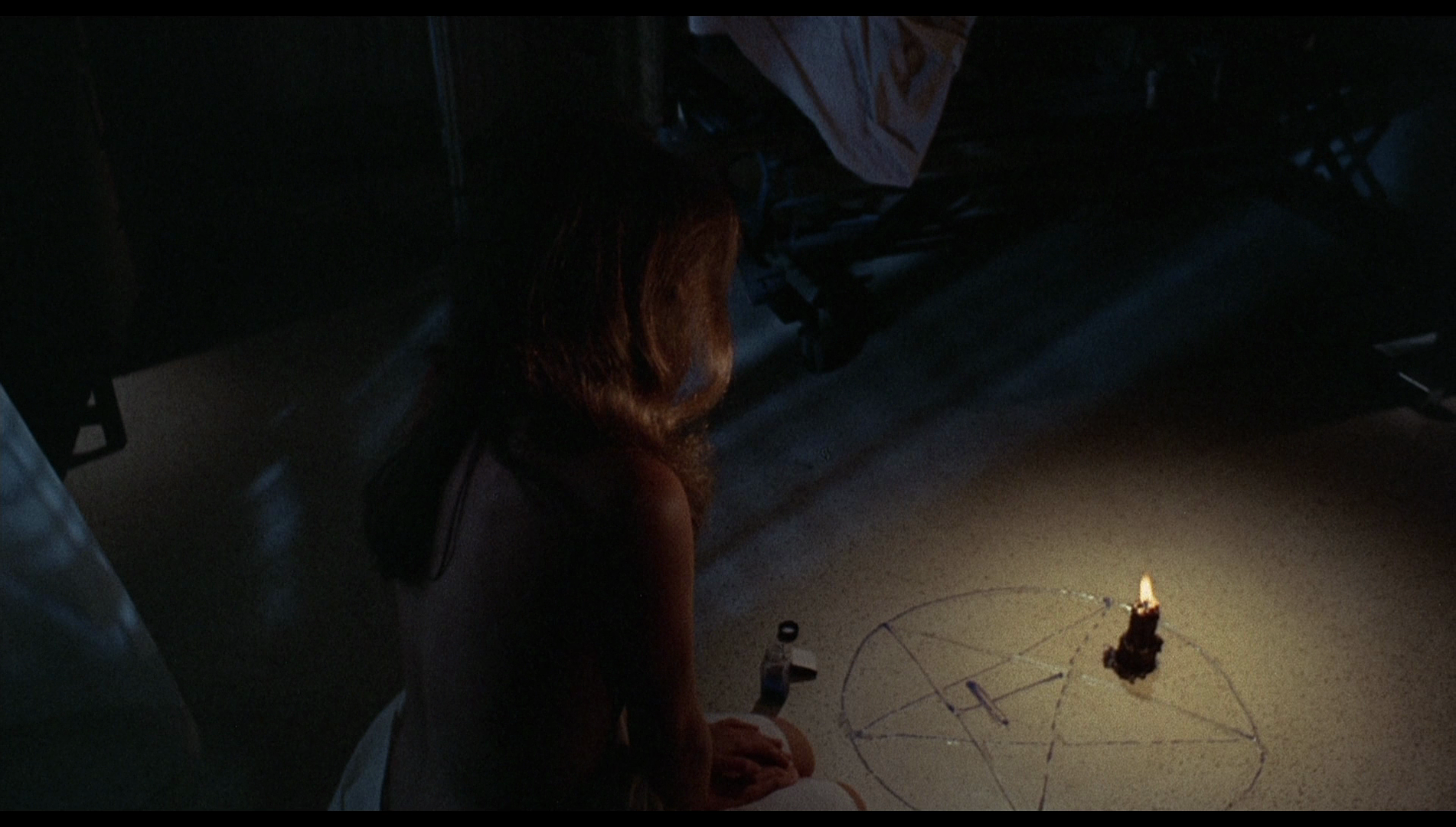 Wendkos was, according to Director of Photography William C Spencer, ‘just a nasty guy’ who chastised the crew, arguing aggressively about lighting, and thereby inspired the ire of Jacqueline Bisset (Spencer, cited in Etter, op cit.: 104). On the other hand, Wendkos remembered his working relationship with Spencer as a positive one, praising the Director of Photography’s work on the film (Wendkos, cited in ibid.). However, Wendkos remembers Bissett being ‘frightened’ by the scene towards the end of the film in which Paula conjures up the devil: ‘Those actors who have Catholic backgrounds, when you do a Black Mass [on screen], that really frightens them’ (Wendkos, quoted in ibid.). The shooting of this scene ‘affected her [Bissett’s] sleep and dreams […] It got into her unconscious life’ (Wendkos, quoted in ibid.). Wendkos was, according to Director of Photography William C Spencer, ‘just a nasty guy’ who chastised the crew, arguing aggressively about lighting, and thereby inspired the ire of Jacqueline Bisset (Spencer, cited in Etter, op cit.: 104). On the other hand, Wendkos remembered his working relationship with Spencer as a positive one, praising the Director of Photography’s work on the film (Wendkos, cited in ibid.). However, Wendkos remembers Bissett being ‘frightened’ by the scene towards the end of the film in which Paula conjures up the devil: ‘Those actors who have Catholic backgrounds, when you do a Black Mass [on screen], that really frightens them’ (Wendkos, quoted in ibid.). The shooting of this scene ‘affected her [Bissett’s] sleep and dreams […] It got into her unconscious life’ (Wendkos, quoted in ibid.).
Patrick McGilligan has suggested that The Mephisto Waltz, the last feature film on which formerly blacklisted screenwriter Ben Maddow (the writer of Huston’s The Asphalt Jungle, 1950, and Nicholas Ray’s Johnny Guitar, 1954) worked, may be interpreted as ‘a coded defense of his [Maddow’s] HUAC [House Un-American Activities Commission] transgression, perhaps, for the heroine is the victim of a Satanic cult who achieves a dubious revenge by meticulously staging her own death’ (McGilligan, 1997: 160). Maddow himself had made a Faustian pact with the devil when he named names in front of the HUAC, something which reputedly haunted Maddow and which remained unprinted for a significant number of years; Maddow’s reputation as a Leftist man of integrity ensured this revelation of his private betrayal of friends and colleagues to the HUAC would forever sit in conflict with his public persona (ibid.: 158-9). Certainly, this sense of context gives a new frame for The Mephisto Waltz’s insistent focus on persecution, paranoia over the ‘true’ identity of one’s lover (that a loving man, living a middling existence, may be ‘possessed’ by the soul of a despicable member of the privileged classes), and characters making deals with the devil; it also makes the film, if not a cathartic outpouring of Maddow’s feelings about his association with the HUAC, something of a swansong for the writer.
Video
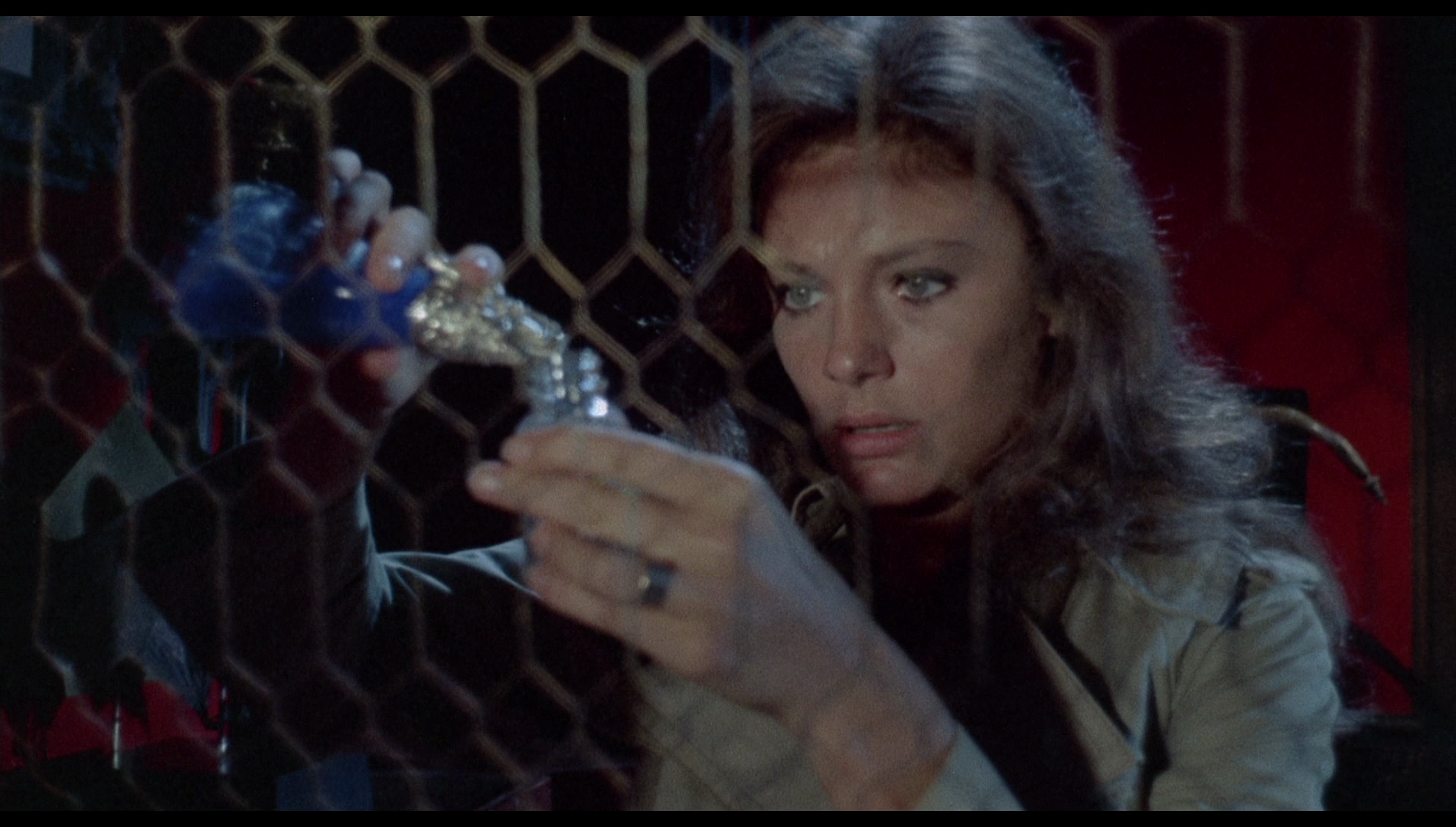 The film takes up just under 21Gb of space on its Blu-ray disc, and the 1080p presentation uses the AVC codec. Presented in its original aspect ratio of 1.85:1, The Mephisto Waltz is uncut and has a running time of 108:40. This is the first time the film has appeared on home video in the UK (though the picture used to play fairly frequently on various ITV channels, as I recall). The film takes up just under 21Gb of space on its Blu-ray disc, and the 1080p presentation uses the AVC codec. Presented in its original aspect ratio of 1.85:1, The Mephisto Waltz is uncut and has a running time of 108:40. This is the first time the film has appeared on home video in the UK (though the picture used to play fairly frequently on various ITV channels, as I recall).
The film’s photography is often non-naturalistic and can be quite inconsistent in places. Close-ups of Jacqueline Bisset (and some of the other actors) are frequently shot with much diffused light, resulting in a flattering image but also one which is very ‘soft’. These shots are intercut with shots that use more natural lighting schemes, resulting in a jarring contrast within the same scene between a soft-focus style and a more harsh, contrast-y pattern of light. In the scene in which Myles falls asleep whilst donating blood for Duncan, and witnesses the strange ritual in which Roxanne transfers Duncan’s spirit into Myles’ body, the sense of what Myles witnesses as having a dreamlike quality is emphasised by a vignette-type effect in which the outer edges of the screen are blurred. Director of Photography William W Spencer confirmed in interview that the technique was achieved via the application of Vaseline on the lens (Spencer, cited in Etter, op cit.: 103). This ‘dream’ sequence, and several others in the film (for example, the dream in which Paula is visited by the ‘ghost’ of Duncan), also used extremely short lenses (of 9mm in focal length). Acknowledging these characteristics of the film’s original 35mm colour photography, the presentation of The Mephisto Waltz on Signal One Entertainment’s new Blu-ray is pleasing. Contrast levels are very good: midtones have a strong sense of definition to them, and the blacks are deep and rich. A strong level of detail is present throughout, and damage is limited to a small handful of very fine scratches and marks. At about 9 minutes into the picture, there’s a small, fleeting instance of gate weave or telecine wobble which quickly corrects itself. Inconsistences in the original photography aside, the image on this Blu-ray release is very consistent and clear. Colour saturation is pleasing: the vibrant reds of the walls of the Ely house, for example, are communicated very well. Finally, the encode is strong and ensures the presentation retains the structure of 35mm film. 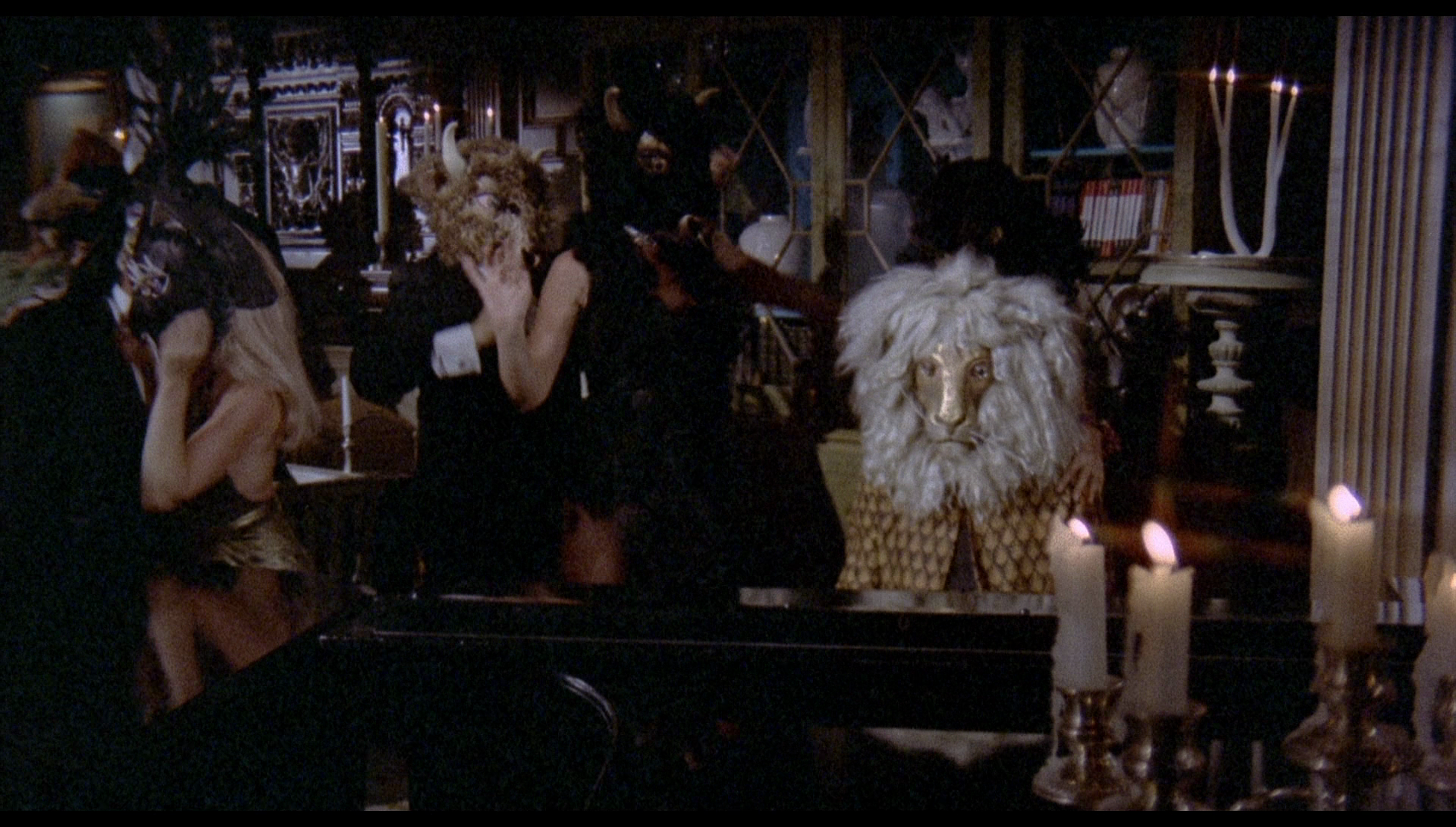 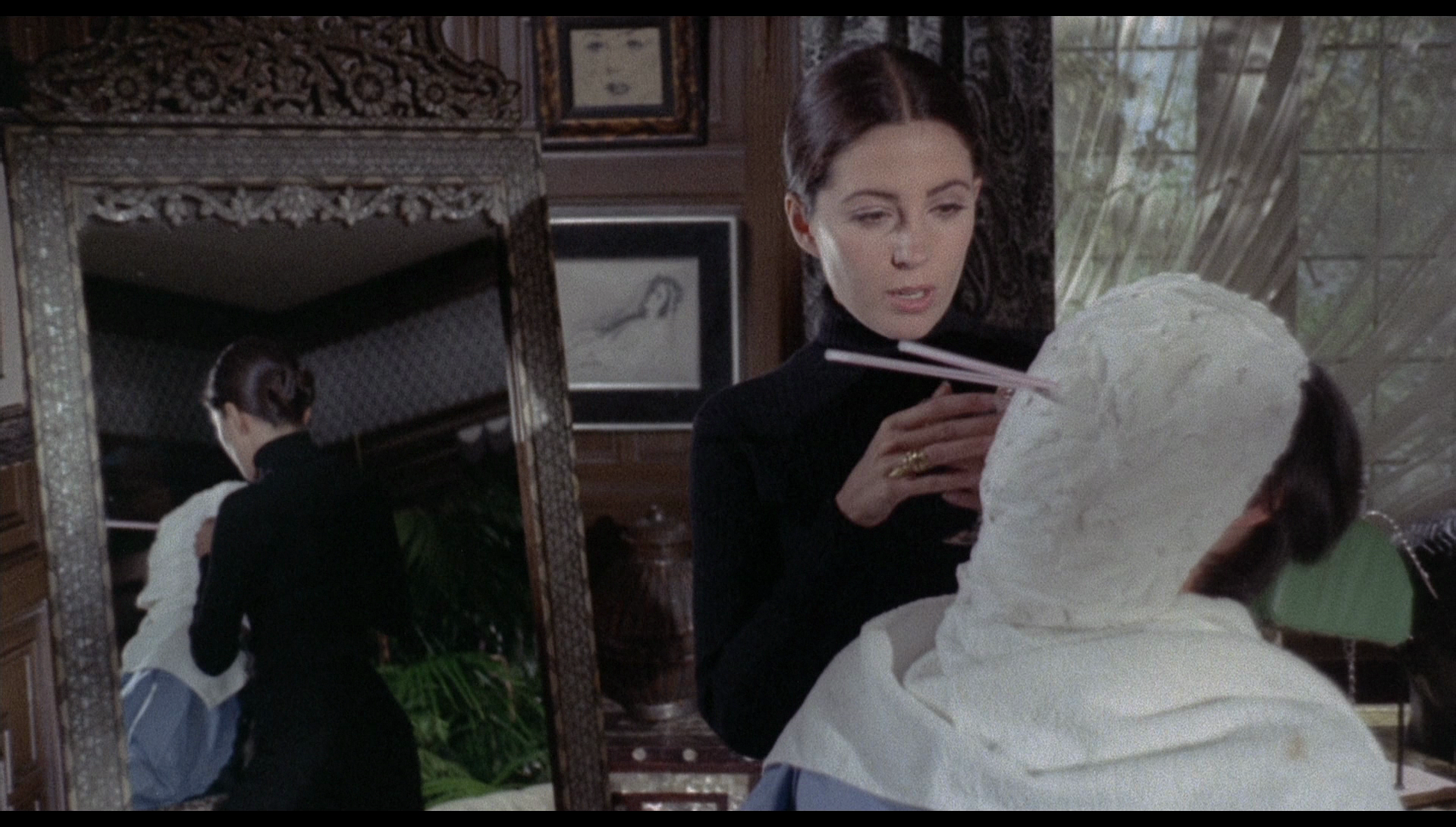 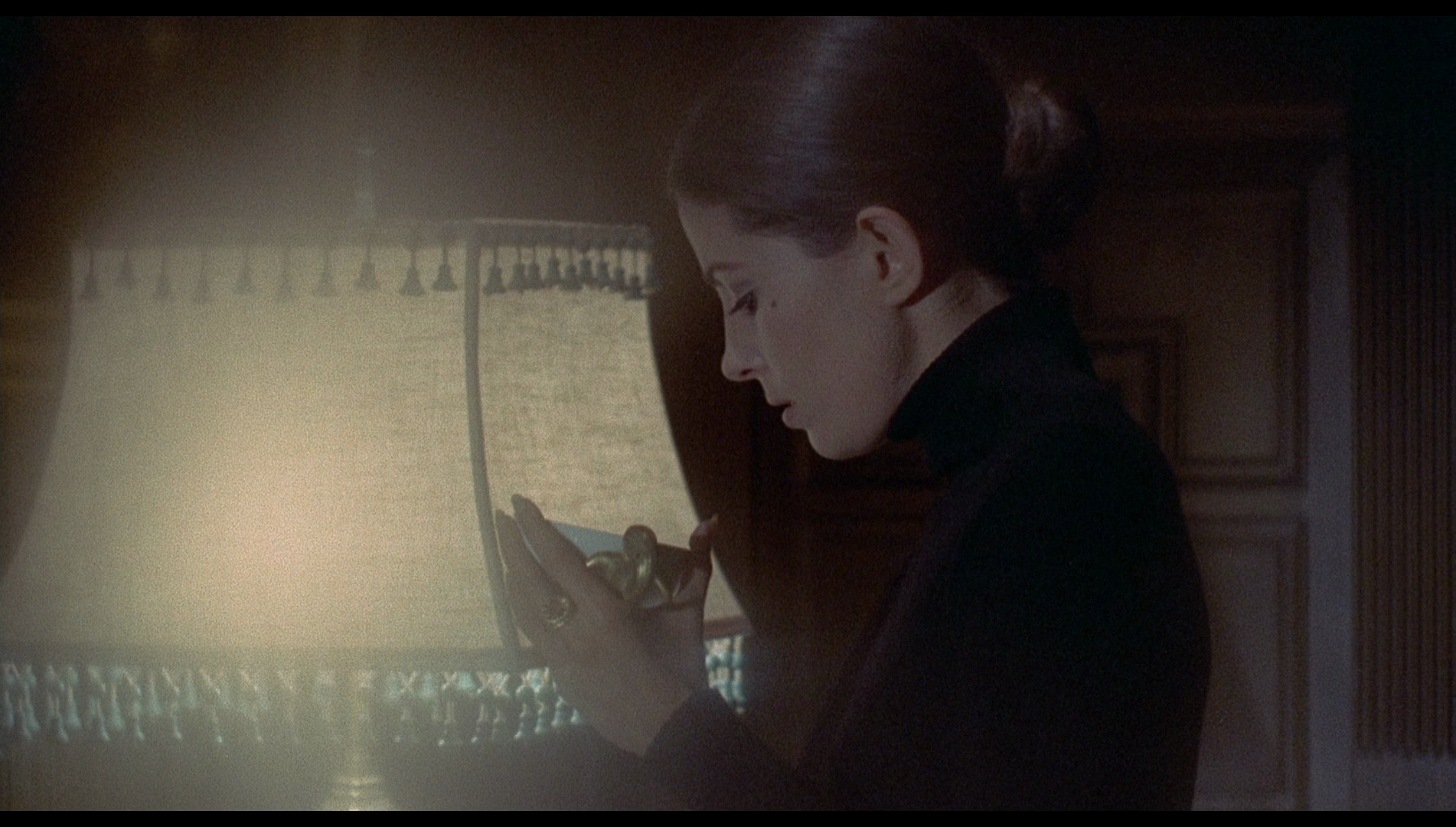
Audio
Audio is presented via a LPCM 1.0 track. This is clean and clear, and is accompanied by optional English subtitles for the Hard of Hearing (which are easy to read and accurate). The audio track demonstrates a strong sense of depth and clarity, especially when Jerry Goldsmith’s score appears in the film. David Huckvale notes that in its use of avant-garde stylings, Goldsmith’s score for The Mephisto Waltz anticipated the trend during the 1970s for ‘occult shockers’ to feature ‘extreme avant-garde techniques’ within their scores – for example, Krzysztof Penderecki’s score for The Exorcist (William Friedkin, 1973) or Goldsmith’s later score for The Omen (Richard Donner, 1976) (Huckvale, op cit.: 61). Interestingly, the score uses motifs borrowed from the Catholic chant ‘Dies Irae’, predating the use of similar motifs in Wendy Carlos’ score for The Shining (Kubrick, 1979); interestingly, this is the second film Signal One have released in the space of a month to feature a score which uses motifs from ‘Dies Irae’ (the other is Richard Fleischer’s 1956 war picture Between Heaven and Hell, reviewed by us here).
Extras
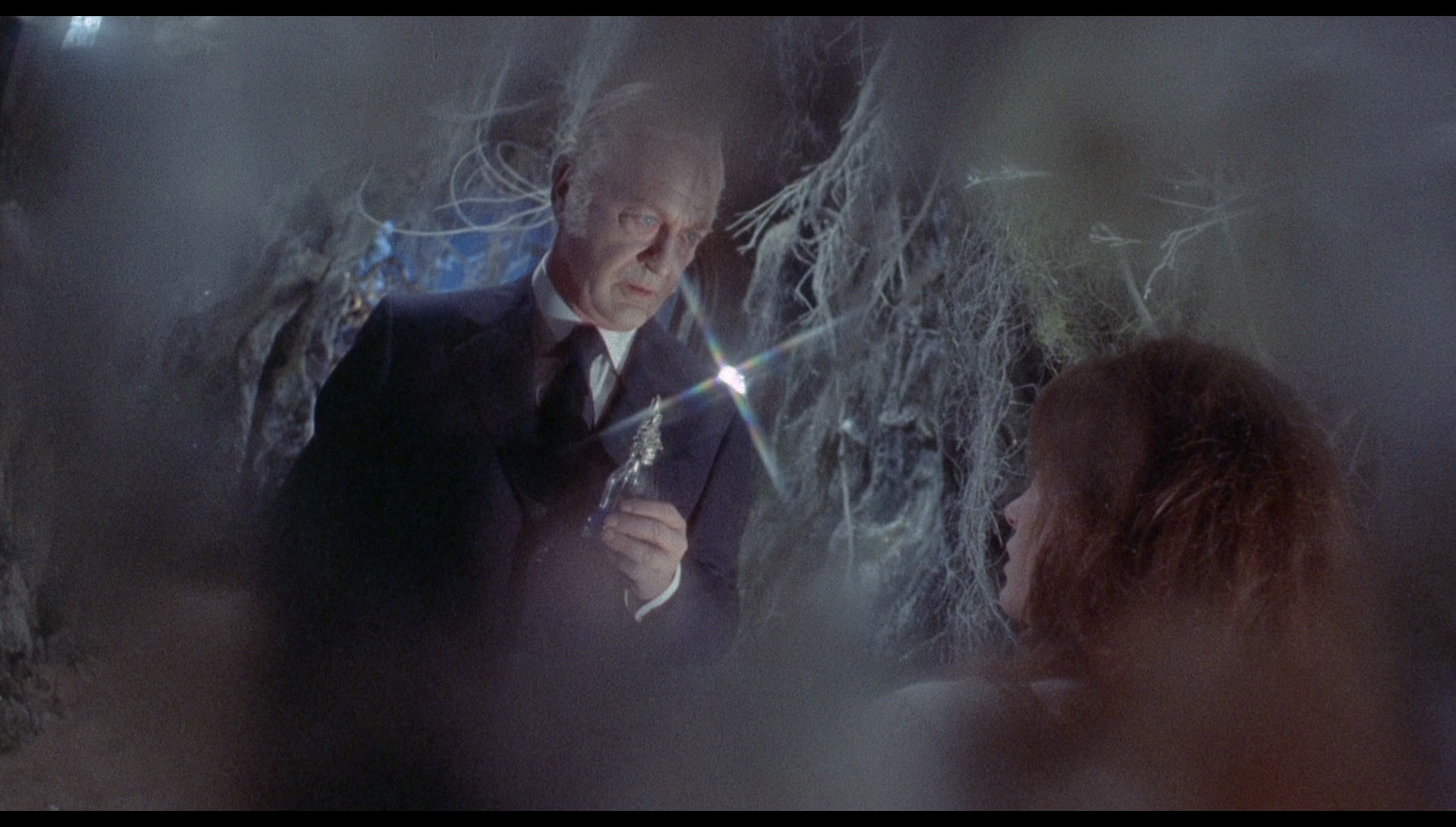 The disc includes: The disc includes:
- An audio commentary with Nathaniel Thompson and Tim Greer. Here, Nathaniel Thompson – the owner of the excellent Mondo Digital website – talks with Tim Greer, his co-writer on the DVD Delirium book series. The commentary is packed with well-researched information, reflecting on the film’s score by Goldsmith and talking about the film’s relationship with the source novel. - ‘Dancing with the Devil: An Appreciation of The Mephisto Waltz’ (18:52). This new video essay’ opens with a reading from Fred Mustard Stewart’s source novel. Online critic Michael Mackenzie contextualises The Mephisto Waltz within the spate of horror films made during the 1960s and early 1970s. Mackenzie reflects on his personal interest in the film and discusses some of the film’s themes, also talking about the film’s strange offhand dismissal of the death of Abby. - A gallery of promotional material (23 images). - The film’s trailer (2:26).
Overall
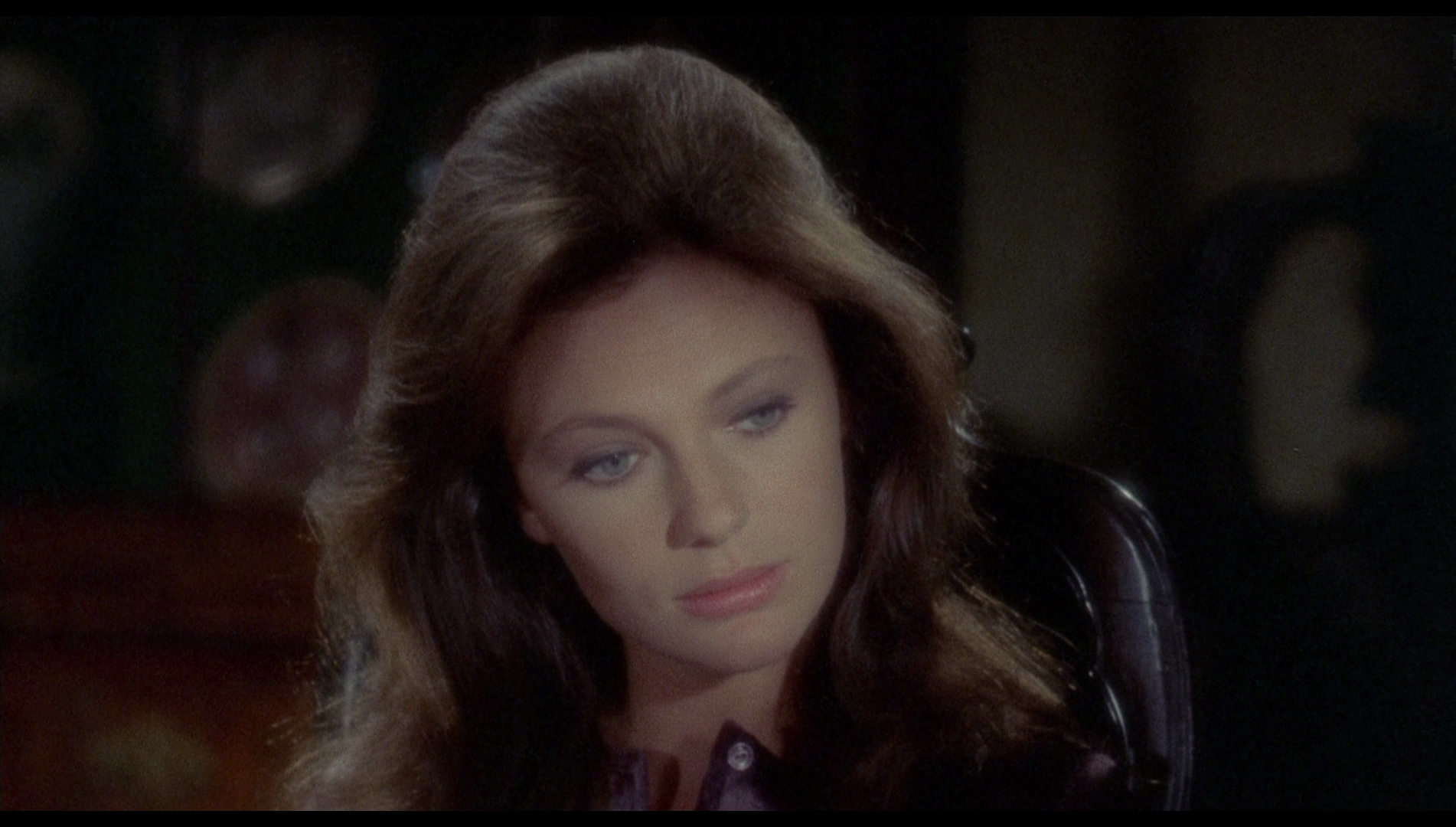 Not totally successful, The Mephisto Waltz is nevertheless an interesting, if middling, example of the popular trend during the late 1960s and 1970s of films about black magic, Satanism and Faustian pacts. Certainly, the film feels very much like a validation of conspiracy theories linking the wealthy elite with black magic rituals practised behind closed doors. Appropriately, given Wendkos’ background in television, The Mephisto Waltz seems like a television production, albeit a particularly daring one. The picture encompasses some bizarre proceedings, including an attack upon Paula by Robin (the Elys’ dog) which is framed as a sexual assault. The cast are uniformly strong, especially Alda who, in his days prior to his work as Hawkeye on M*A*S*H* (1972-83), is given the unenviable task of playing a character who has been ‘possessed’ by another. Though soon eclipsed by the likes of The Exorcist and The Omen, The Mephisto Waltz is an entertaining example of a 1970s major studio horror picture. Not totally successful, The Mephisto Waltz is nevertheless an interesting, if middling, example of the popular trend during the late 1960s and 1970s of films about black magic, Satanism and Faustian pacts. Certainly, the film feels very much like a validation of conspiracy theories linking the wealthy elite with black magic rituals practised behind closed doors. Appropriately, given Wendkos’ background in television, The Mephisto Waltz seems like a television production, albeit a particularly daring one. The picture encompasses some bizarre proceedings, including an attack upon Paula by Robin (the Elys’ dog) which is framed as a sexual assault. The cast are uniformly strong, especially Alda who, in his days prior to his work as Hawkeye on M*A*S*H* (1972-83), is given the unenviable task of playing a character who has been ‘possessed’ by another. Though soon eclipsed by the likes of The Exorcist and The Omen, The Mephisto Waltz is an entertaining example of a 1970s major studio horror picture.
Signal One Entertainment’s Blu-ray release contains a predictably pleasing presentation of the film, and accompanies it with some good contextual material – particularly the new audio commentary by Thompson and Greer. References: Etter, Jonathan, 2003: Quinn Martin, Producer: A Behind-the-Scenes History of QM Productions and Its Founder. London: McFarland Huckvale, David, 2013: The Occult Arts of Music: An Esoteric Survey from Pythagoras to Pop Culture. London: McFarland McGilligan, Pat, 1997: ‘Ben Maddow: The Invisible Man’. In: McGilligan, Pat (ed), 1997: Backstory 2: Interviews with Screenwriters of the 1940s and 1950s. University of California Press: 157-92 Muir, John Kenneth, 2002: Horror Films of the 1970s. London: McFarland 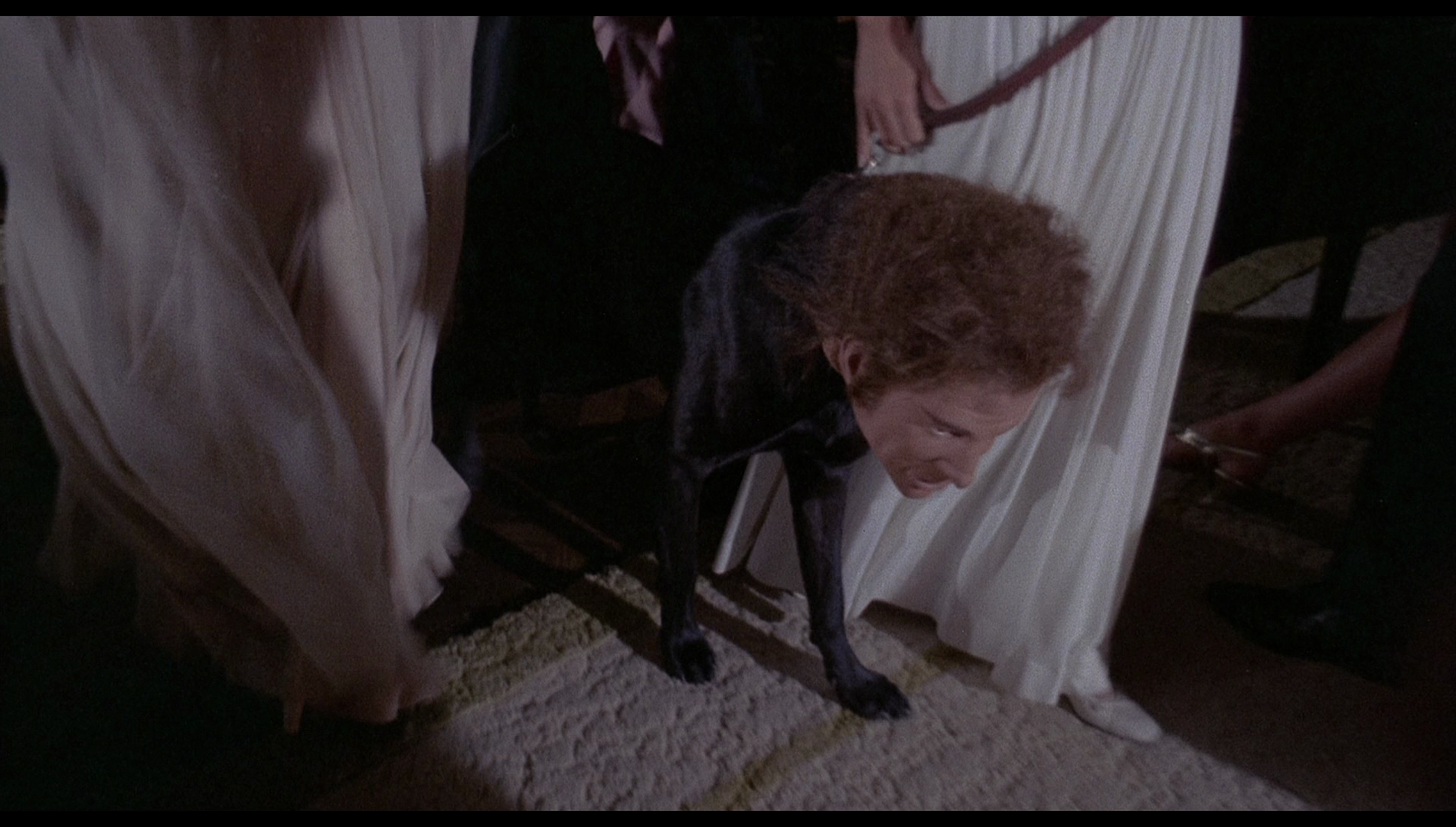
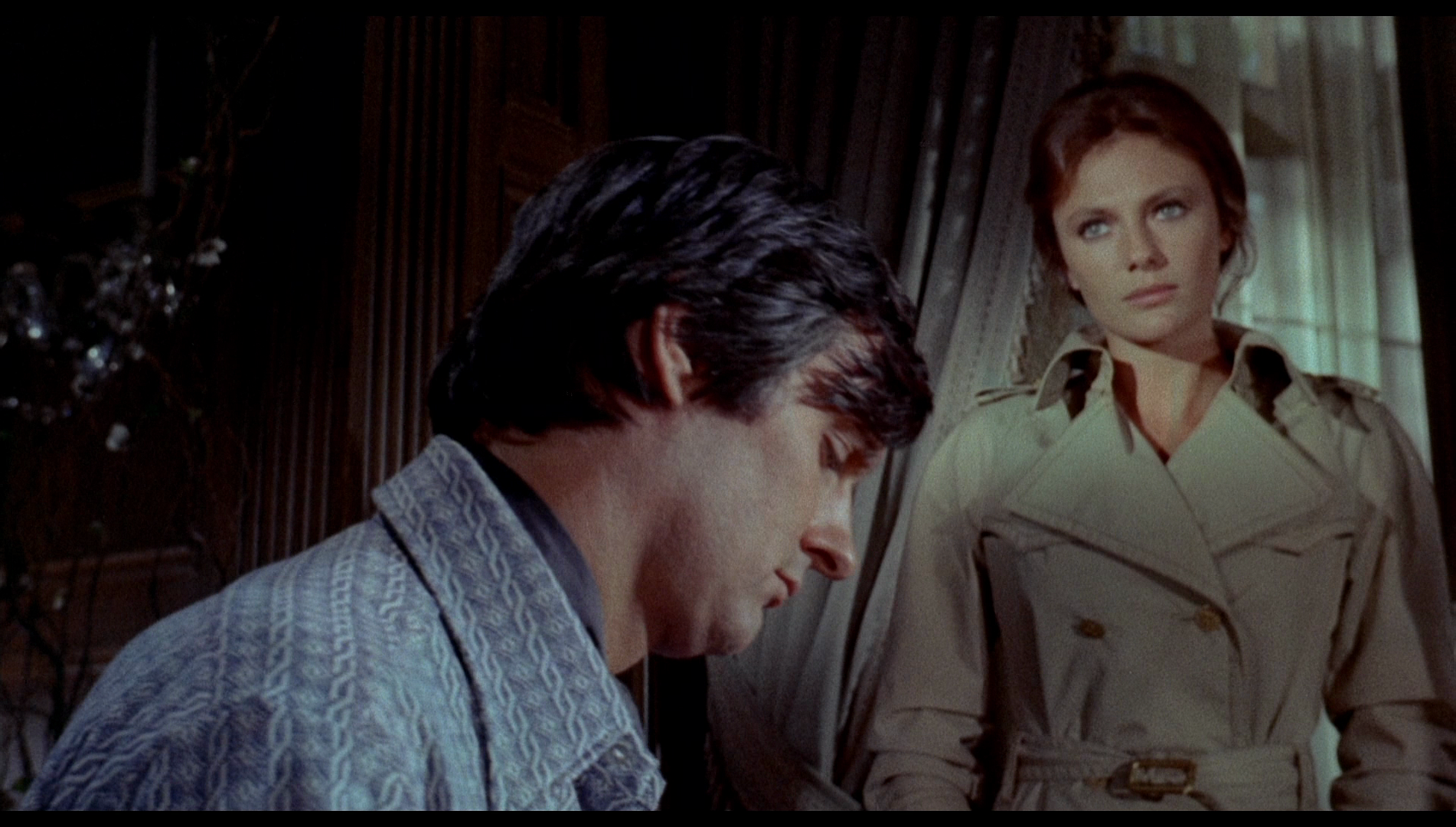
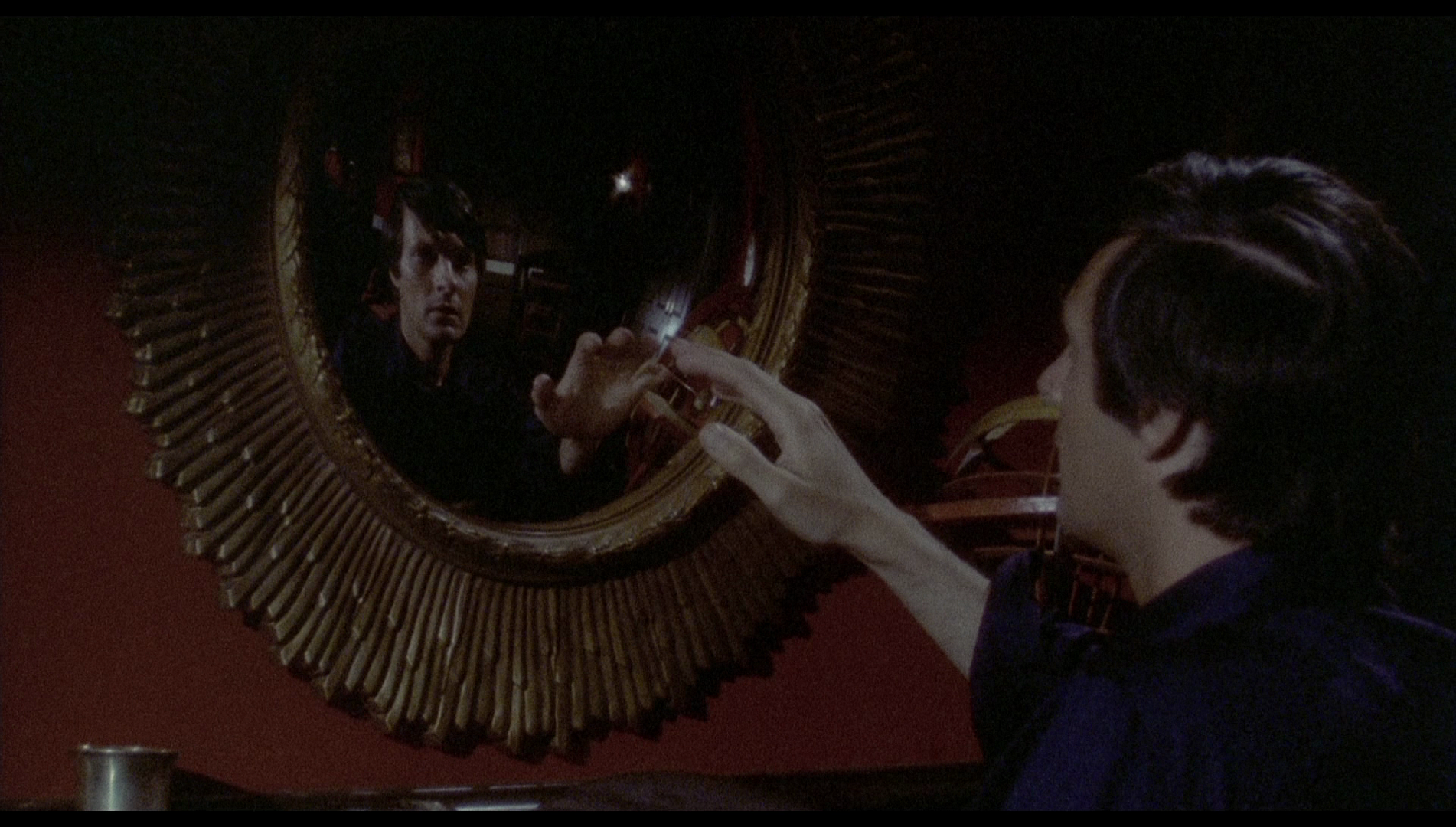

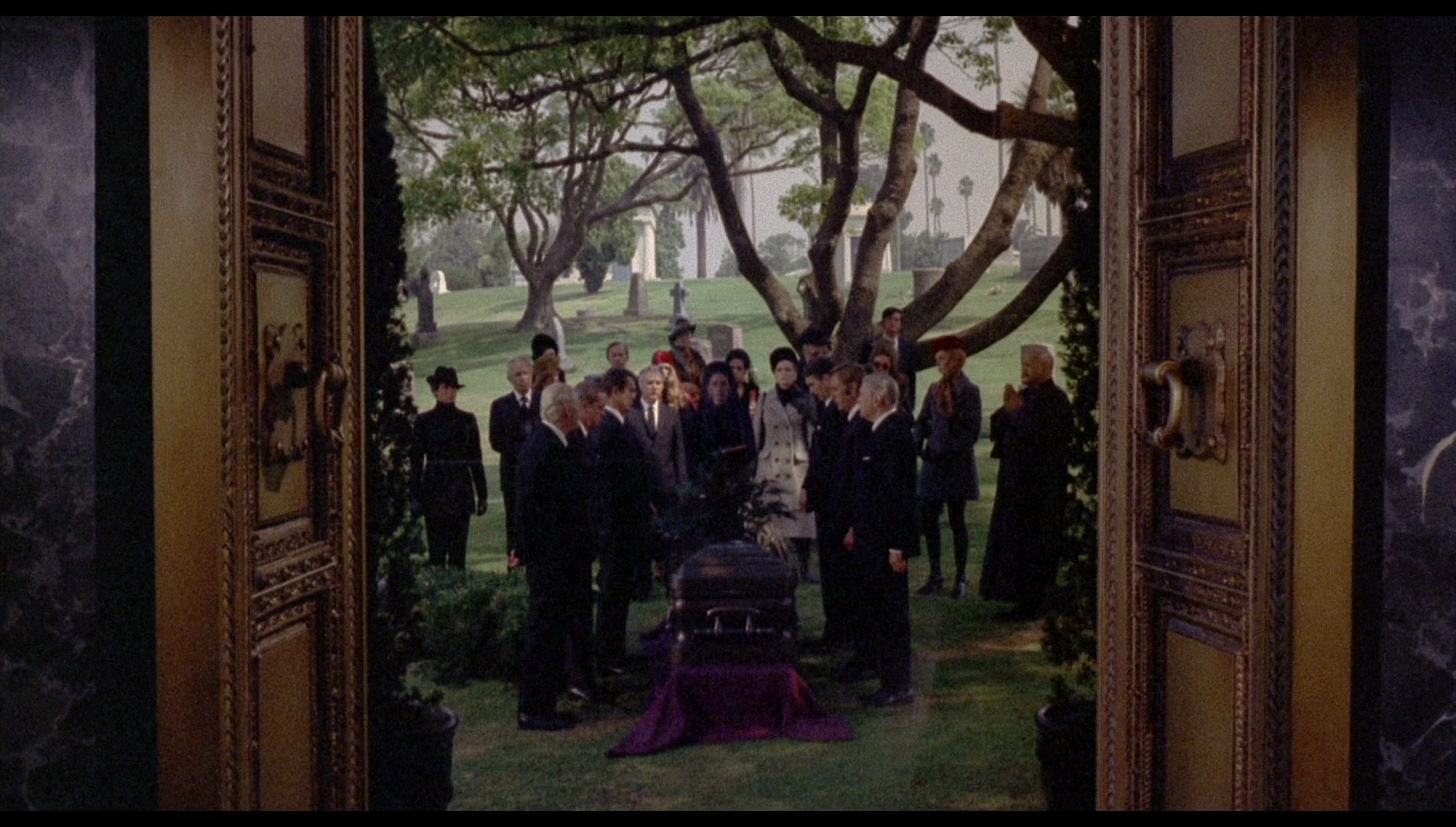
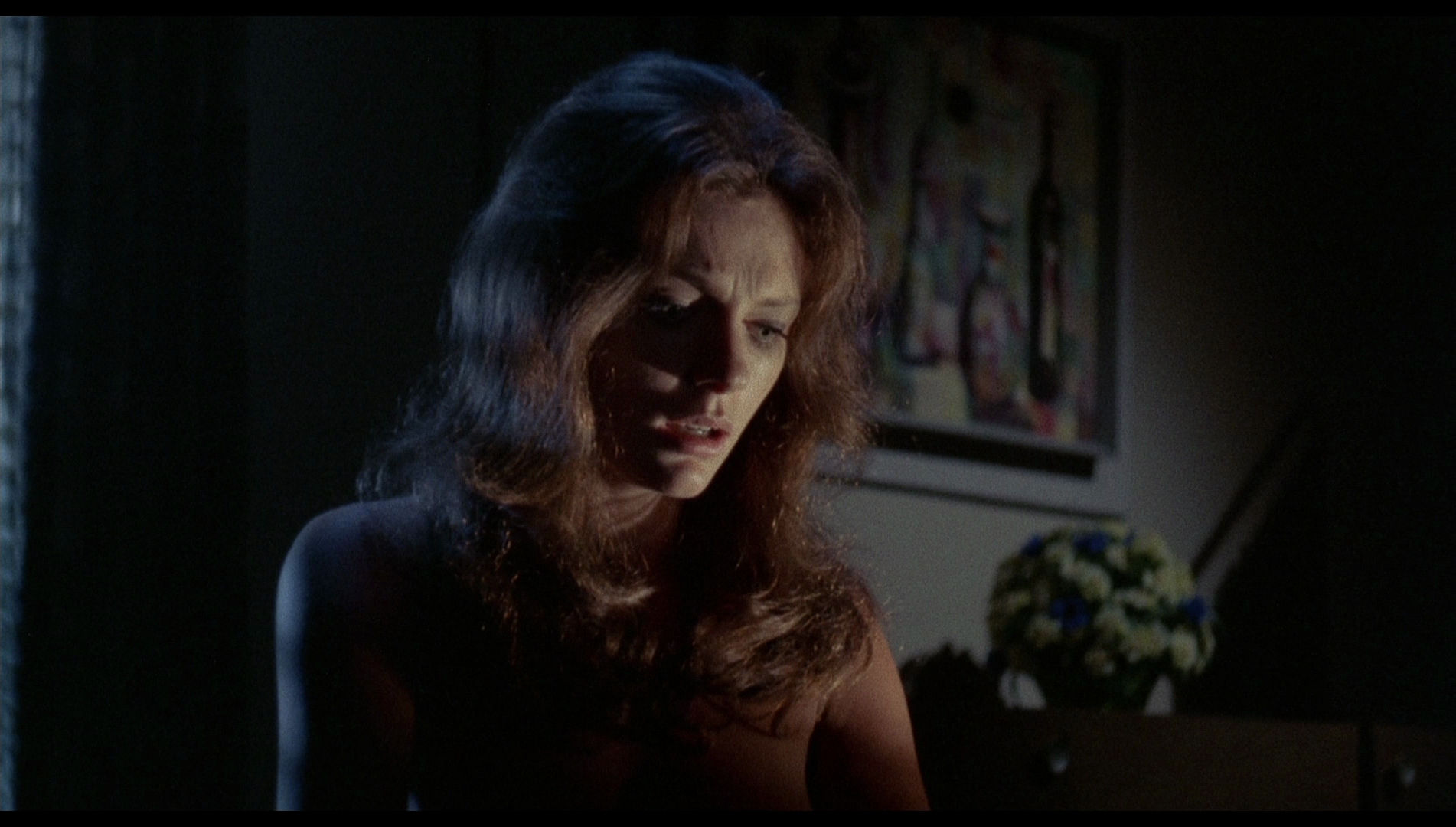
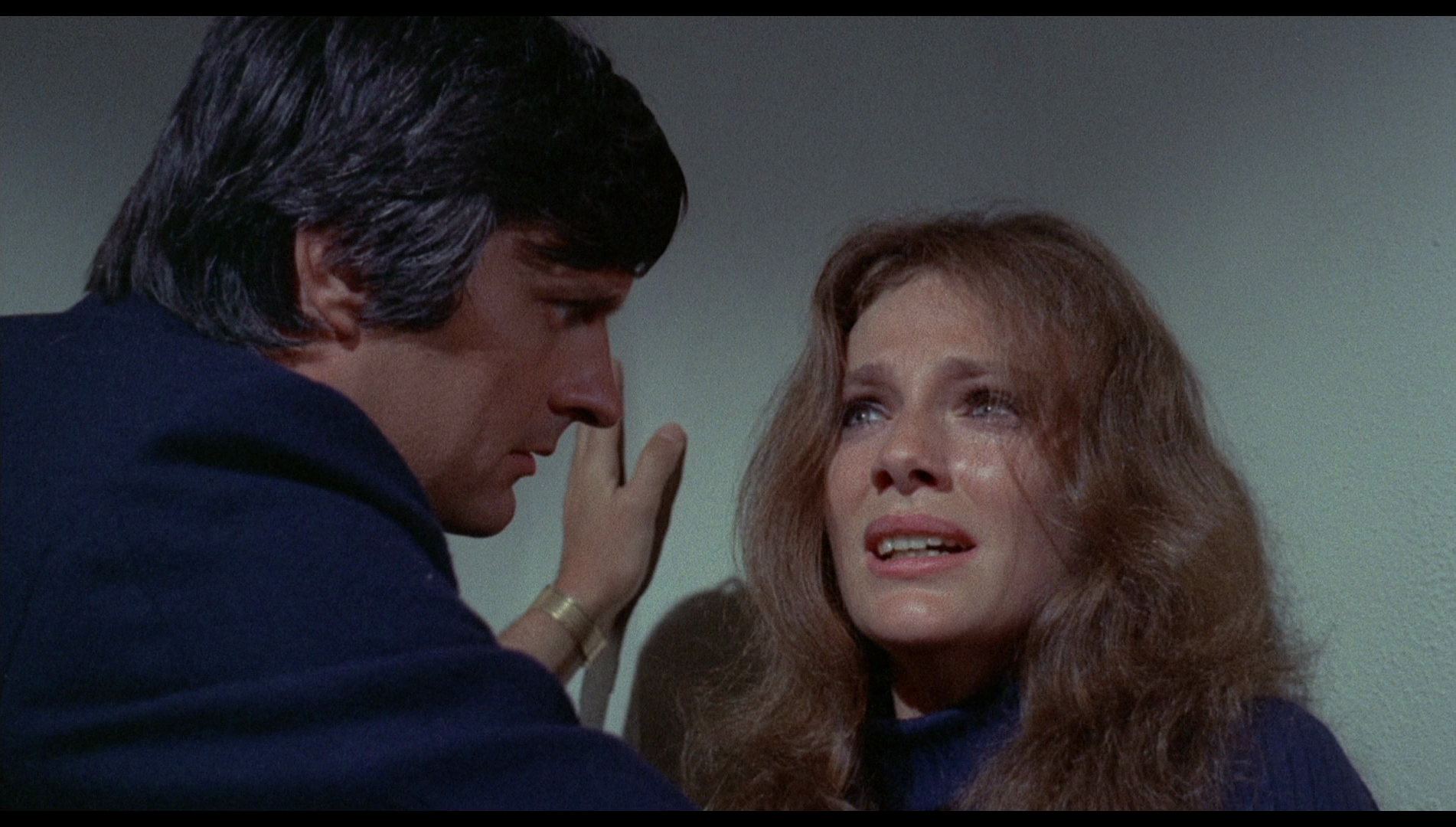
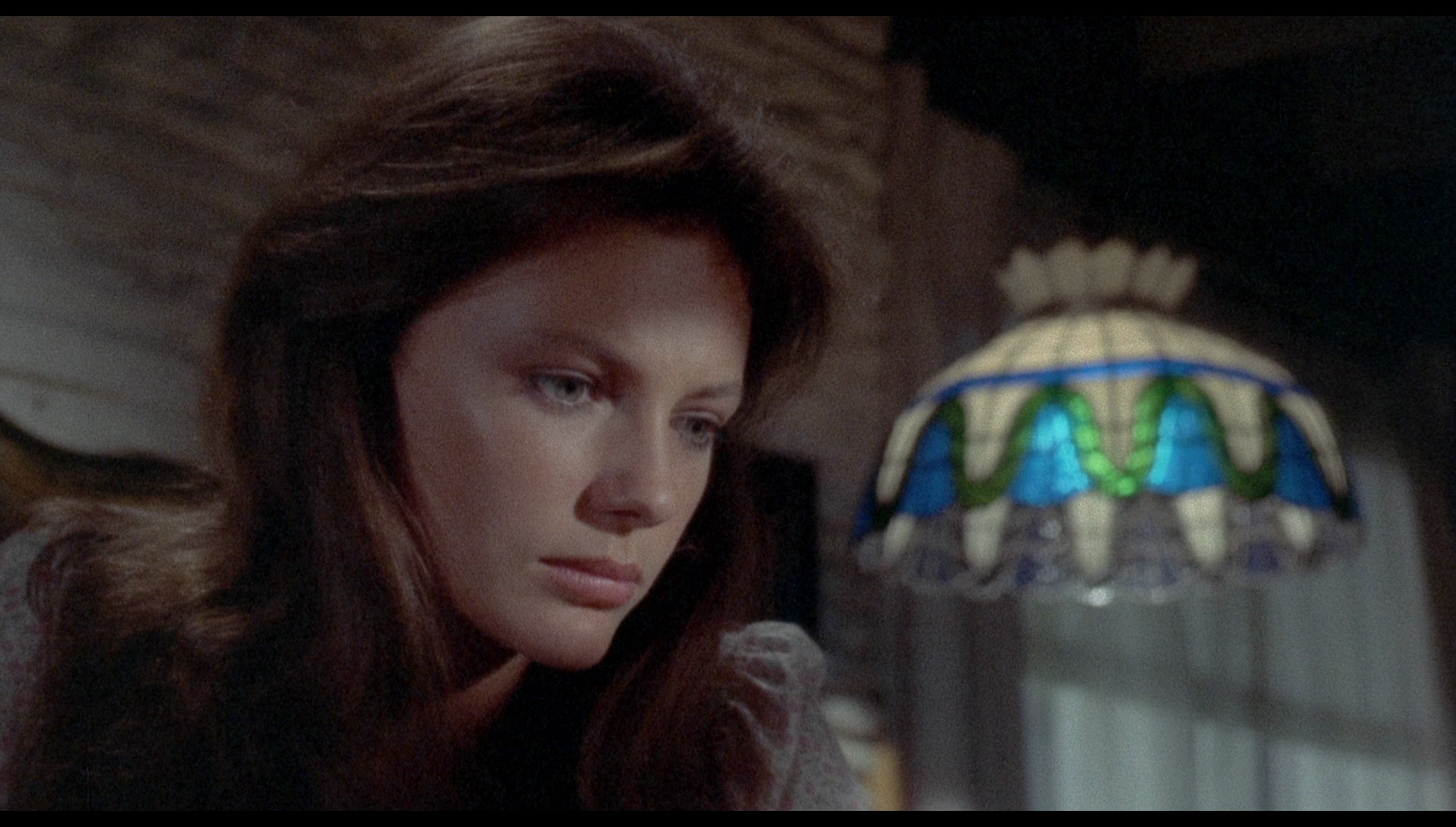
|
|||||

|